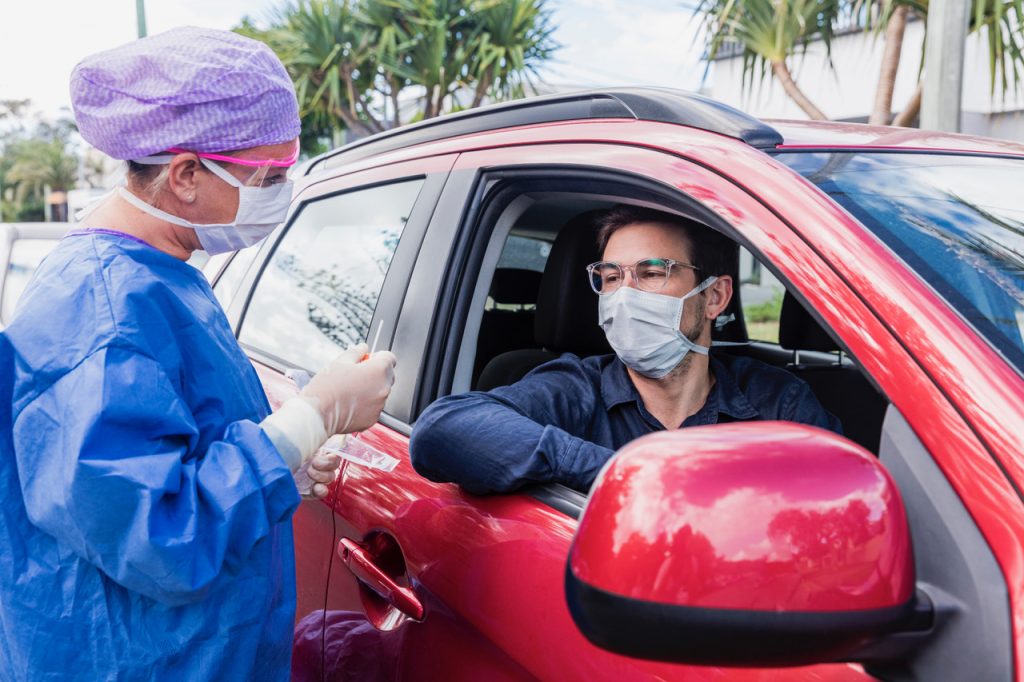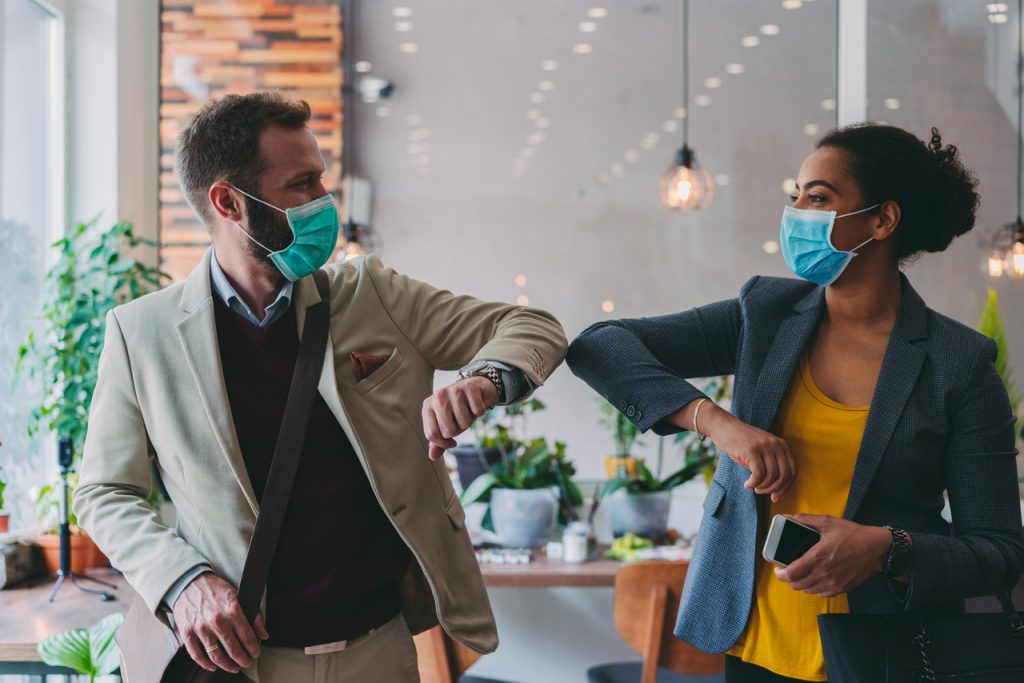 Americans have entered a phase II reopening from COVID 19 with little clarity or consistency. The country is opening at varying rates across the states with the goal of getting back to “normal” economically and socially. Given the unknowns with this virus a return to normal as we remember it will be in question for some time.
Americans have entered a phase II reopening from COVID 19 with little clarity or consistency. The country is opening at varying rates across the states with the goal of getting back to “normal” economically and socially. Given the unknowns with this virus a return to normal as we remember it will be in question for some time.
The unknowns, the expectations for work and schools and routines of daily life provokes a general sense of anxiety. Like a house of mirrors in the amusement park this distorts how we view our actions and confuses our senses. Is this the way out? Or are we going deeper into the labyrinth?
Why?
We lack a cohesive test, track, trace and quarantine strategy in the country.
![]()
When confronted with a new and aggressive virus that spreads through breathing, laughing, sneezing, and talking immediate action is needed to block its advance. Quarantine of the sick has been used in epidemics and pandemics for more than a thousand years. Today there is a public health strategy of Testing, tracking & tracing, and quarantine that allows societies to slow the spread of disease like COVID 19. When used effectively, the initial lockdowns can be eased more quickly based on the data from a comprehensive test, track and quarantine strategy.
Test, track, trace and quarantine strategies in other countries have allowed them to tamp down the spread, quell hot spots, and gradually lift restrictions. Germany, Denmark, South Korea, Taiwan, Singapore, Australia, and New Zealand (declared COVID free on June 8th) are all managing the virus on a daily basis with this strategy.
As of June 8th the COVID Tracker for the US reports, 20,615,303 tests were conducted thus far. We are a nation of 331,002,651 people according to the United Nations so that means less than 10 percent of the country has been tested. Most significant, our healthcare professionals and first responders are not being tested and their risk of exposure is higher than the general population.
With conflicting information and growing unrest with staying home, it’s not surprising that we hear questions from friends and colleagues about the safety of returning to work or having a haircut or flying to see family. This is our house of mirrors because we want to believe what we think we see and move that direction, yet we hesitate because there are really no clear road markers.
What should I DO?

The need to return to an office building, school, work in the service sector, and more raise questions and to many people concerns about their own or their family’s safety
There is no clear roadmap for Americans because we are well into the pandemic with no uniformity. This means our individual risk assessment is the basis for our decisions going forward. You CAN use science and COVID data to help determine your risk, however.
First, consider what is known about the people who become seriously ill with this disease. The information continues to grow as scientists learn daily about how this virus operates in our bodies. These factors can be a guide:
- Age, being male, and obesity have been seen consistently as risk factors for serious illness. Underlying disease also contributes to the picture of people most seriously affected.
- Certain health conditions also are more likely to have complications: diabetes, asthma, high blood pressure, heart disease
- There is also an interesting correlation surfacing on patient records about blood type. Type A blood is more common in people who are hospitalize with serious complications from COVID, whereas type O blood is seen less often in these patients. Researcher caution that how blood type contributes to the disease process is not clear. At this time there is correlation data, so the issue requires more in-depth study to see if there is a relationship.
Making Decisions
There is no doubt that this virus spreads through respiratory droplets. An infected person can spread it even if they do not display symptoms. There was confusion on the term asymptomatic spread when the WHO Director was answering a journalist question. The interpretation by journalists and the wording of the response led to a firestorm around this issue: CAN someone who has no symptoms and feels fine transmit this virus? This abstract from CDC research clarifies the two terms, pre-symptomatic and asymptomatic.
Abstract
Recent epidemiologic, virologic, and modeling reports support the possibility of severe acute respiratory syndrome coronavirus 2 (SARS-CoV-2) transmission from persons who are presymptomatic (SARS-CoV-2 detected before symptom onset) or asymptomatic (SARS-CoV-2 detected but symptoms never develop). SARS-CoV-2 transmission in the absence of symptoms reinforces the value of measures that prevent the spread of SARS-CoV-2 by infected persons who may not exhibit illness despite being infectious. Critical knowledge gaps include the relative incidence of asymptomatic and symptomatic SARS-CoV-2 infection, the public health interventions that prevent asymptomatic transmission, and the question of whether asymptomatic SARS-CoV-2 infection confers protective immunity.
Asymptomatic spread of the virus makes containing it extremely difficult with the test, track and quarantine strategy. This increases the importance of our choices about social distancing, hand washing, and how we approach our daily life.
We are likely to have this virus in our midst for a long time. Scientists, virologist, epidemiologists have warned of the increase in risk with zoonotic diseases since the first SARS in 2002. MERS, Ebola, and Zika have occurred in the last seven years. Today, SARS 2 is described as their “nightmare scenario”. We’ve heard these suggestions many times, but they are good strategies to incorporate into our daily lives for our own protection.
Exit the house of mirrors

- Social distancing matters
- Risk factors matter
- Wear a mask when in buildings and crowded spaces (Reminder you are protecting others from your breath only)
- Handwashing, at least 20 seconds in warm water and soap or with a 70% alcohol-based solution
- Wear disposable gloves in high-touch situations to minimize hand-to-head transmission
Other suggestions:
- Plan outside activities where groups are small and not merged with others
- Summer may slow transmission. Humidity and warm temperatures attract this virus. When someone carrying the virus exhales the virus will gravitate to the water molecules in the air and fall to the ground more quickly.
- Create your small group of like-minded people who respect distance and self-car. This can be a way to revive your social life in a more controlled way
- When returning to in-restaurant dining ask how it is cleaned, how tables are spaced, whether servers are wearing masks, and if their masks are appropriately closed around the nose and sides of mouth
Share your tips and suggestions as you venture into the new normal under COVID and we will share with readers.

What suggestions do you have as we venture into the new normal under COVID?